“weaving for me should be the process of transforming the weft into accumulated space replacing the vanishing of time” Chiyoko Tanaka
I found these images on these websites: http://browngrotta.com/pages/tanaka.php and http://modernistaesthetic.blogspot.com/2014/02/chiyoko-tanaka.html and I found them crushingly beautiful.
They are textiles by the artist Chiyoko Tanaka whose artist’s statement includes the following:
For me the act of weaving, as the weft threads accumulate one by one, is a representation of time passing away; texture acting as the locus of the present time. Finally, a piece of fabric is the result, the existence of which I regard as the expression of my sensitivity. To be specific, weaving for me should be the process of transforming the weft into accumulated space replacing the vanishing of time. Placing the fabric on the ground, I trace out the ground texture and surface of the fabric. The act of tracing is a transformation of time coherence into space and grinding is the transformation of space coherence into time. The final color of the surface is not so important, more the effect achieved by the application of a certain soil, charcoal or choice of tool which helped translate the texture of the ground more readily into my “canvas.” The true past tense of the verb to grind, “ground,” also implies the earth, which can be used to embed, implant, erode and emboss its own surface into my work. Chiyoko Tanaka
I found her thinking about weaving crushingly beautiful too. The only problem is that the notion that as the weft is placed the accumulation of fabric is replacing time is literally true and makes me feel the way I probably should have been feeling all along, i.e. this should be really good . . . this should matter . . .
I want to try in insert some of that consciousness into my weaving. It might be a hard balance for me because I also have a strong belief in the beauty of utility – that textiles should be functional and that their functionality doesn’t make them matter less. When we weave napkins or placemats for our tables, towels for our kitchens or blankets for our beds – we are not creating the merely utilitarian, we are creating an aesthetic environment that gives us pleasure every time we have to do the repetitive and sometimes fatiguing chores of daily life. In that sense, we are replacing time with a textile by weaving, but we are also giving ourselves moments of aesthetic joy both in the creation and in the use. It is not exactly contradicting Tanaka’s statement – I have no idea what led Tanaka to weave art textiles rather than domestic/utilitarian textiles, but I certainly feel cowed by her art and might be a little defensive about my cup towels – poor ‘ol cup towels.





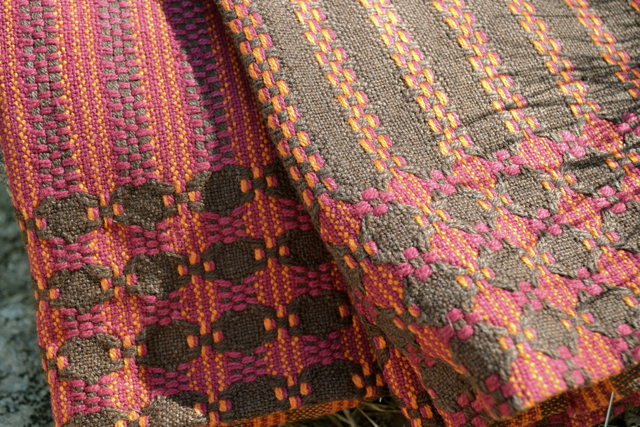
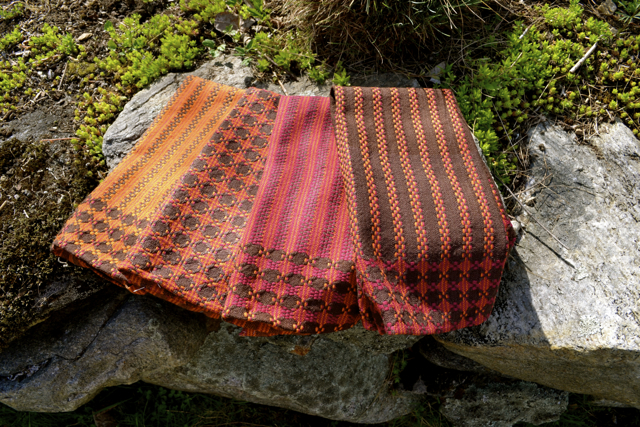
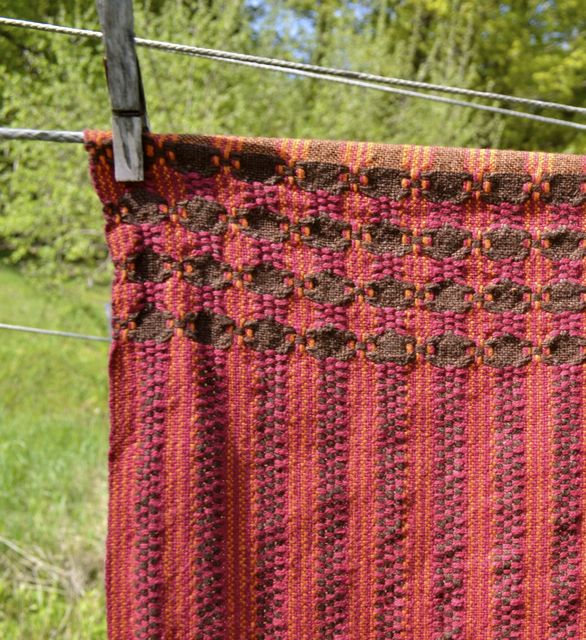
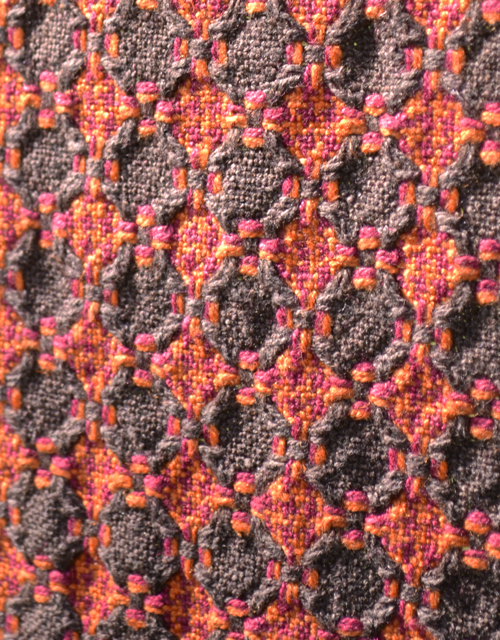
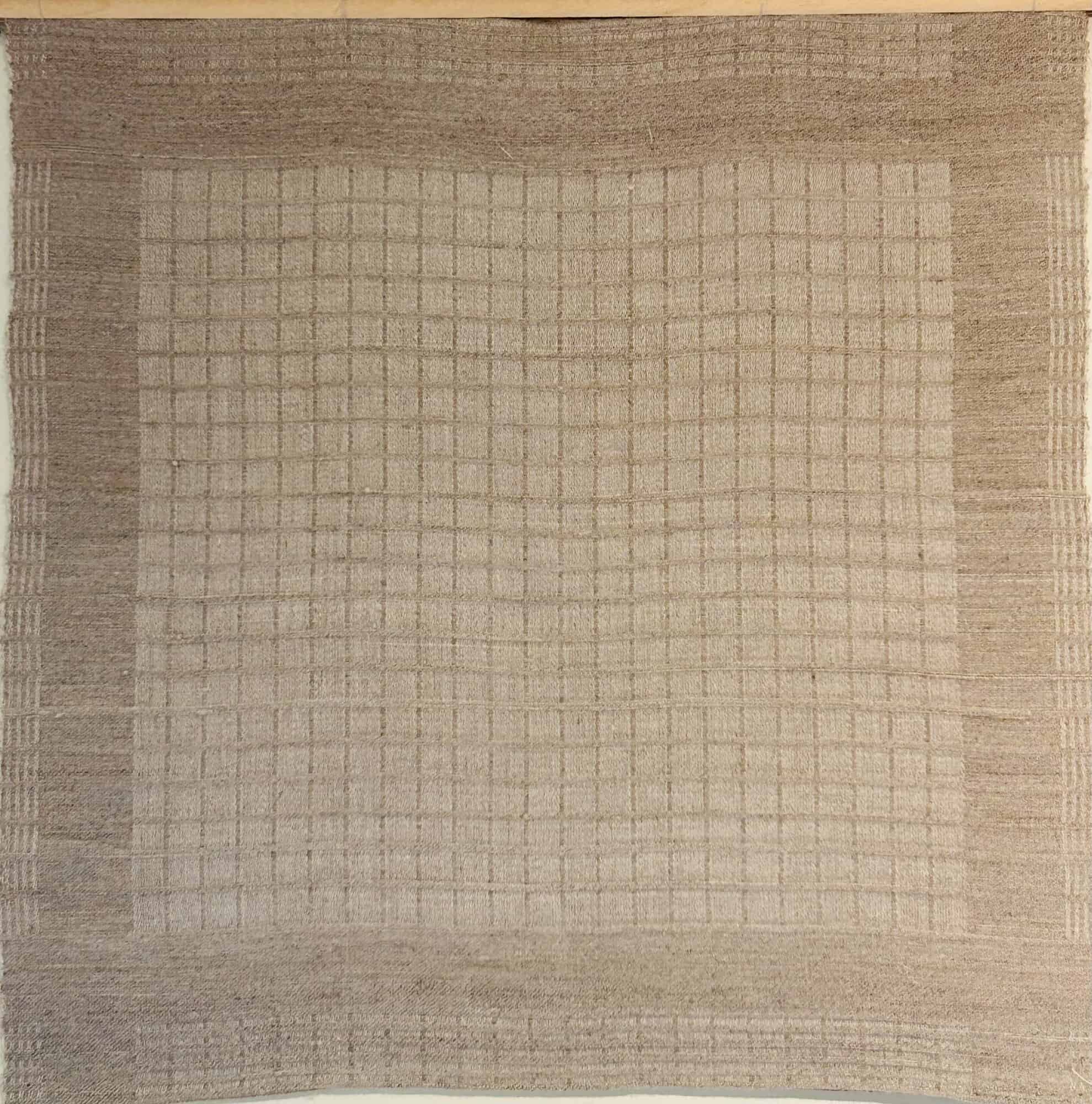
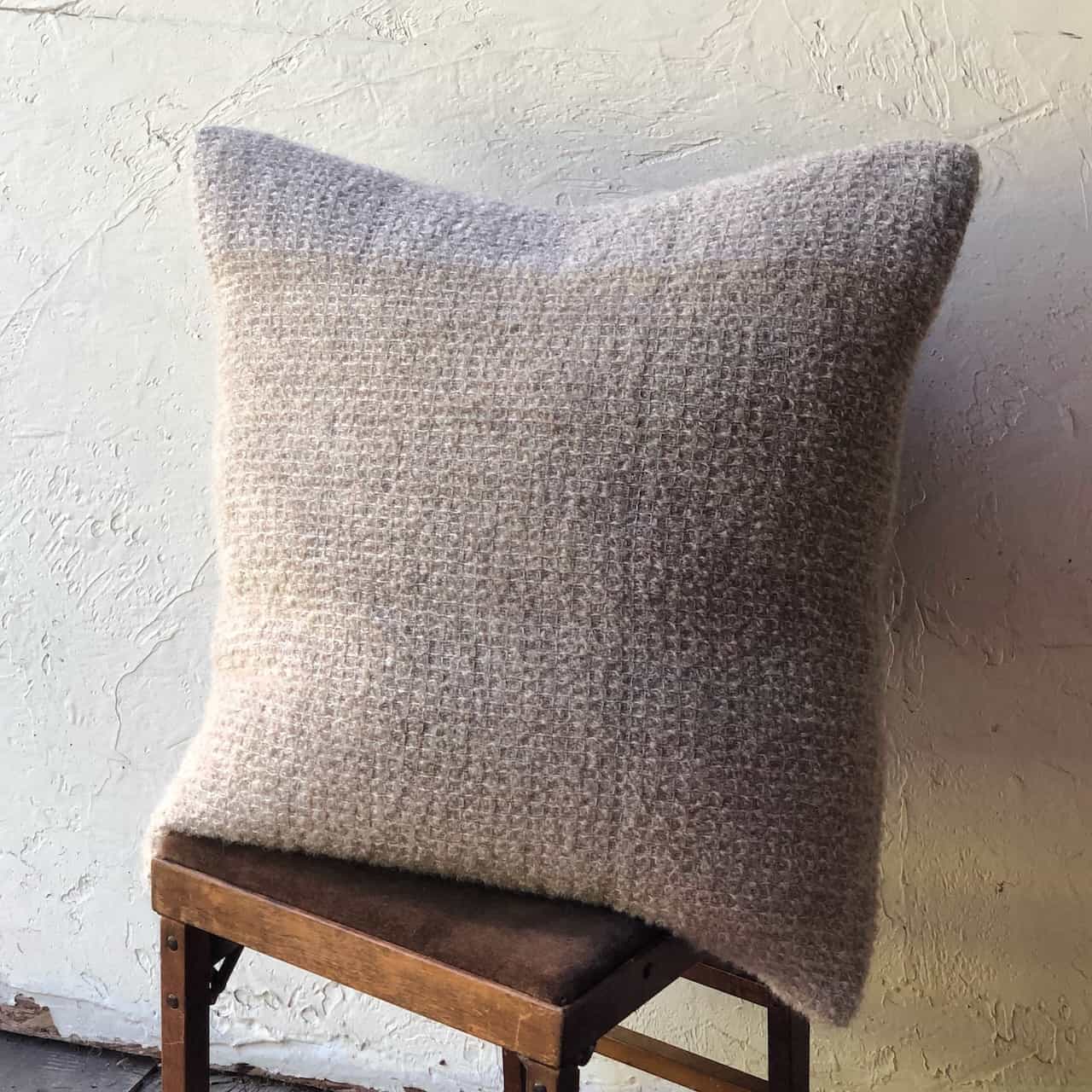
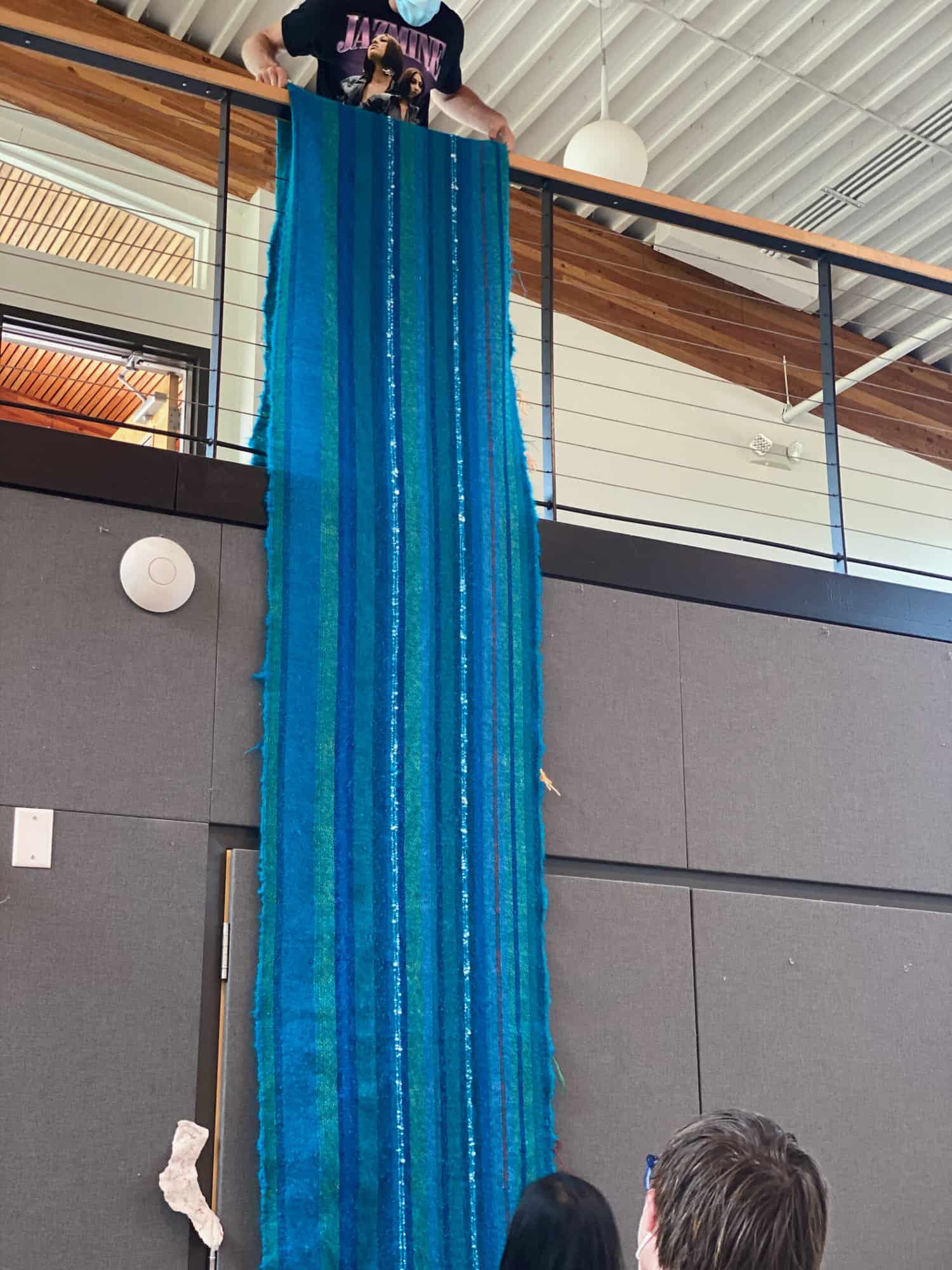
marlene toerien
HI both have its place, I also weave utilitarian rather than art pieces, it is nice to use my own woven articles, rather than shop bought ones. I must say for many years I have drawn the line at weaving dish cloths, but now I do have a warp on for dish cloths, which was sold before I wove the first one.
Elisabeth Hill
I was of the same mind . . .why would one weave dish towels? There are cheap, widely available and often pretty ones available everywhere, but now I take great pleasure in weaving them, having them and giving them . . .
Shirley
And thanks to you, I now do also, just made some fancy linen handtowels and want to weave more linen. All I have to do is get my new (36+ year old) Glimakra functioning well. I’ve updated with texsolv but need the longer, heavier lamms they sold starting several years after my loom was made, not available for my 63″ loom until June. Sweet Ed, Mr. Cappuccinoman, is in the process of making some heavy extensions for some of the lamms to allow me to weave. If it works, I won’t need to buy new ones from Sweden. All I want to do when I grow up is weave like you.
Elisabeth Hill
All I want is to sew (and tile!) like you!!! We will have to talk about a date for “play time” My summer is very disorganized at the moment because my parents-in-law might be coming to live with us for awhile starting in June, but nothing is decided until the day it happens . . . so I may be heading your way for cappuccino and company sooner than you think:)))
Jill Lee-Jones
Hi, I keep coming back to this post to look at the towels…. : ) Can you tell me where the pattern comes from? I’d like to try it…thanks!
Elisabeth Hill
Hi Jill,
I got the draft from a danish weaving book (HARD to get):
Andersen, Paulli. Danske bondevævninger Hvergarnsstoffer ca. 1750-1850 : analyser, materialer, mønstre og farver. Borgen, Denmark: Trykt hos Narayana Press, 1981. p. 186.
But I wrote an article for Handwoven Magazine May/June 2015 that has the instructions/drafts for these towels. Good luck – they are really fun to weave and experiment with.
Jill Lee-Jones
Thanks for the reply, I will try to locate a copy of the magazine. I am so inspired by looking at the photos on your blog, I hope someday I’ll be able to take a class with you.